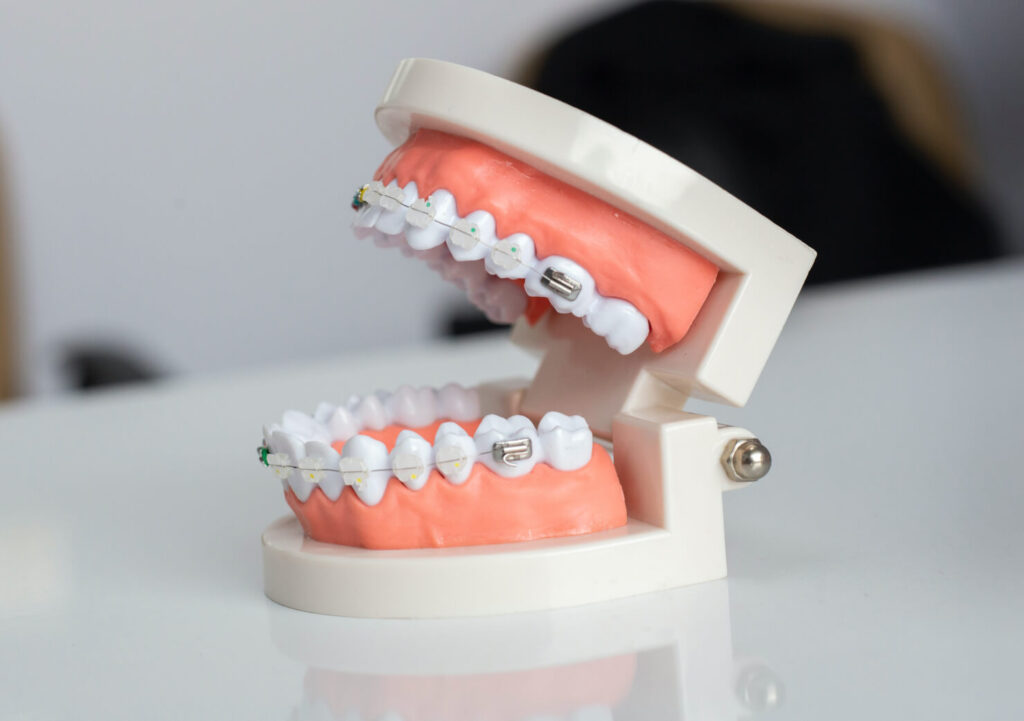A healthy smile goes beyond having straight and white teeth; it also involves the proper alignment of your teeth and jaws. Your bite, or the way your upper and lower teeth fit together, plays a significant role in your oral health. If you suspect you might have a ‘bad bite,’ also known as malocclusion, it’s essential to understand the signs and what steps you can take to address it. In this article, we’ll explore the common types of malocclusion and how to tell if you have one.
What Is Malocclusion?
Malocclusion is a dental term used to describe the misalignment of your teeth and the way your upper and lower jaws fit together when you close your mouth. There are different types of malocclusion, each with its unique characteristics. Understanding these types can help you determine whether you may have a ‘bad bite.’
Common Types of Malocclusion
Overbite (Deep Bite): An overbite occurs when your upper front teeth significantly overlap your lower front teeth. In severe cases, it can lead to teeth and jaw discomfort.
Underbite: An underbite is the opposite of an overbite, where the lower front teeth protrude beyond the upper front teeth. This condition can affect your speech and chewing.
Crossbite: A crossbite happens when some of your upper teeth sit inside your lower teeth when you bite down. It can lead to tooth wear, gum recession, and jaw misalignment.
Open Bite: An open bite occurs when some of your upper and lower teeth don’t meet when your mouth is closed. This can lead to speech difficulties and problems with biting and chewing.
Crowding: Crowding happens when there isn’t enough space in your jaw for your teeth to fit properly. This can cause teeth to overlap or become twisted.
Spacing: Spacing refers to gaps or spaces between your teeth, which can be caused by missing teeth or misalignment.
Signs You May Have a ‘Bad Bite’
Now that we’ve covered the common types of malocclusion, let’s explore the signs that may indicate you have a ‘bad bite’:
1. Difficulty Chewing: If you experience challenges when biting or chewing food, it may be due to a misaligned bite.
2. Speech Problems: Malocclusion can lead to speech difficulties, including lisping or difficulty pronouncing certain words.
3. Jaw Pain: Frequent jaw pain, headaches, or discomfort around your jaw joint (TMJ) could be signs of malocclusion.
4. Excessive Wear on Teeth: Misaligned teeth can cause uneven wear on tooth surfaces, leading to sensitivity and potential dental problems.
5. Discomfort or Pain While Eating: Pain or discomfort when eating may be a result of an improper bite that causes strain on your teeth.
6. Oral Health Issues: Malocclusion can contribute to oral health problems such as gum disease, cavities, and difficulties in maintaining proper oral hygiene.
7. Self-Consciousness: If you feel self-conscious about your smile or the appearance of your teeth, malocclusion may be a contributing factor.
8. Chronic Teeth Grinding (Bruxism): Malocclusion can lead to teeth grinding, which can cause tooth damage and jaw pain.
9. Difficulty Closing Your Lips: If you find it challenging to close your lips comfortably, it may be related to malocclusion.
10. Breathing Problems: Some types of malocclusion can affect your airway and cause breathing difficulties, especially during sleep.
What to Do If You Suspect Malocclusion
If you recognize any of the signs mentioned above and suspect you have malocclusion, it’s essential to take action to address the issue. Here are the steps to consider:
1. Schedule a Dental Examination: The first and most crucial step is to consult with a dental professional. Your dentist will evaluate your bite, perform a comprehensive examination, and take X-rays to determine the type and severity of malocclusion.
2. Discuss Treatment Options: Depending on the diagnosis, your dentist will discuss treatment options with you. These may include orthodontic treatment, dental appliances, or, in severe cases, oral surgery.
3. Orthodontic Treatment: Orthodontic treatment, such as braces or aligners, is commonly used to correct malocclusion. These appliances gradually shift your teeth into their correct positions.
4. Dental Appliances: Some malocclusion issues can be addressed with dental appliances like palate expanders or space maintainers.
5. Oral Surgery: In severe cases, oral surgery may be necessary to correct jaw misalignment or malocclusion issues.
6. Follow the Treatment Plan: If orthodontic treatment or dental appliances are recommended, it’s crucial to follow the treatment plan and attend regular appointments for adjustments.
The Importance of Early Intervention
Recognizing malocclusion and addressing it early can prevent more significant oral health problems in the future. Early intervention is especially important for children, as their jaws and teeth are still developing. Identifying and correcting malocclusion during childhood can lead to more effective and less invasive treatment.
In conclusion, if you suspect you have a ‘bad bite’ or malocclusion, don’t ignore the signs. Seek a professional dental evaluation and discuss your concerns with your dentist. Proper diagnosis and treatment can help you achieve a healthier, more comfortable, and aesthetically pleasing smile. Remember that a beautiful smile is not just about straight and white teeth but also a well-aligned and healthy bite.





